Seafire Mk III, Special Hobby, 1/48: last dogfight of the World War 2 'First and Last' Project.
This article is part of a series:
This is my third build on the theme of 'First and Last'.
This ‘First and Last' build features the last day of the second world war, the 15 of August 1945, and the last recorded dogfight in the Pacific theatre. It is an oft told story, so I won't go into huge depth. The aircraft I have built is that of Sub-Lieutenant Gerry ‘Spud' Murphy, a Seafire III from HMS Indefatigable. Murphy took to the air on that day supporting Avengers and Fireflies due to strike against Kamikaze airfields near Tokyo. They took off at war and landed in peace.
When In October 1940 two Martlets of 804 Naval Air Squadron, based on Orkney, forced down a German Junkers 88A that was attempting to bomb the Home Fleet at Scapa Flow, they scored the first victory credited to (an American Built) fighter in Fleet Air Arm service, a Grumman Martlett. The action, by Seafires of 887 and 894 Sqns, escorting 820 Sqn aircraft, included the final British aerial victories of WW2 and resulted in 8 confirmed kills, 3 probables and 4 damaged. Just as the first confirmed victory of the war had fallen to the Fleet Air Arm, so had the last.
During this action Murphy scored 2 kills, both Zero A6M5c aircraft.
If the loss of young Japanese pilots close to the end of the war in this last battle was tragic, then the loss of another Seafire pilot, Sub-Lieutenant Fred Hockley was horrific. He was forced to bail out of his burning plane and was captured near the village of Higashimura and executed at night, 8 or 9 hours after the noon broadcast of the Emperor's recorded reading of the Japanese surrender. His murderers, one a Major from the Imperial Japanese Army's 426th Infantry Regiment, were later hanged for war crimes.
To those wishing to learn more about this fight and the story of the British Pacific Fleet and the Pacific War in general, I'd highly recommend two books especially: ‘The Kamikaze Hunters' by Will Iredale, and ‘Tidal Wave: From Leyte Gulf to Tokyo Bay' by Tom Cleaver.
The history aside I wanted to make a mess of this plane, quite literally. They say you have to worry if a ‘Spitfire' isn't leaking oil! I wanted to make a messy, well-used, sun-faded plane, with weathering to the cartridge ejection ports and exhaust stains showing the trademark paler areas between the carbon/soot caused by the Tetraethyl lead additive to the fuel (used to increase the octane), and the fanning out of the stain due to the six stack exhaust being near to the body of the plane.
If you are interested in more detail about staining a spitfire check out Will Pattison's YouTube channel for his work on the Tamiya 1/48th kit – it is a masterclass. He is inspirational in terms of weathering especially, but overall, as an outstanding modeller. You can spend hours watching, listening and learning there!
I'm going to finish by saying that this is 'my story' for the Seafires of that vintage and operating conditions, and some may disagree with the way I tell it through weathering in terms of fading and staining. I have looked at as many reference photos of operational Seafires as I can find. Some seem to have ‘fuzzier' camo demarcations if you can see them at all, by August 1945. Some do not match factory paint jobs at all. Most of the references came from the planes from the Indefatigable or other carriers. How much of the general mess that these planes seem to be in when photographed came from the fact that they are often taken when the plane has suffered a tough landing is up for debate. The main reference, and the first of the photos I have included here, is the one I settled on as my main guide, and from which I took the dramatic exhaust stains and colours. It is a colourised photo, so may carry with it some codicils, but it looks interesting enough to try to turn into a model!
The rest of the references included here represent a variety of the general faded chaos that Seafires could exist in at that point.
I'd love to give you a detailed version of everything I did, in the correct order, but I have been tinkering with this a while.
I used Tamiya painted tape to make the doped linen used to stop grime, dust and bugs getting into the MGs.
Just this week I repainted and weathered parts of the underside to reduce the width of the cartridge ejection stains.
I have used inks, oils, transparent paint and pastels. I hated the decals, but that may be due to the fact that the kit had been sat on the shelf for a while! I ended up borrowing from other kits when they tore - and although I can be heavy handed the box decals were like tissue paper!
The Tetraethyl Lead tone was made of a mix of deck tan and sky by Mr Paint.
I really enjoyed building this plane as part of a ‘First and Last' set of builds with some of my close friends here on this truly wonderful social scale modelling site! Special thanks to the estimable Louis Gardner @lgardner who had a look at some photos to make sure I wasn't drifting too far wide of the mark!

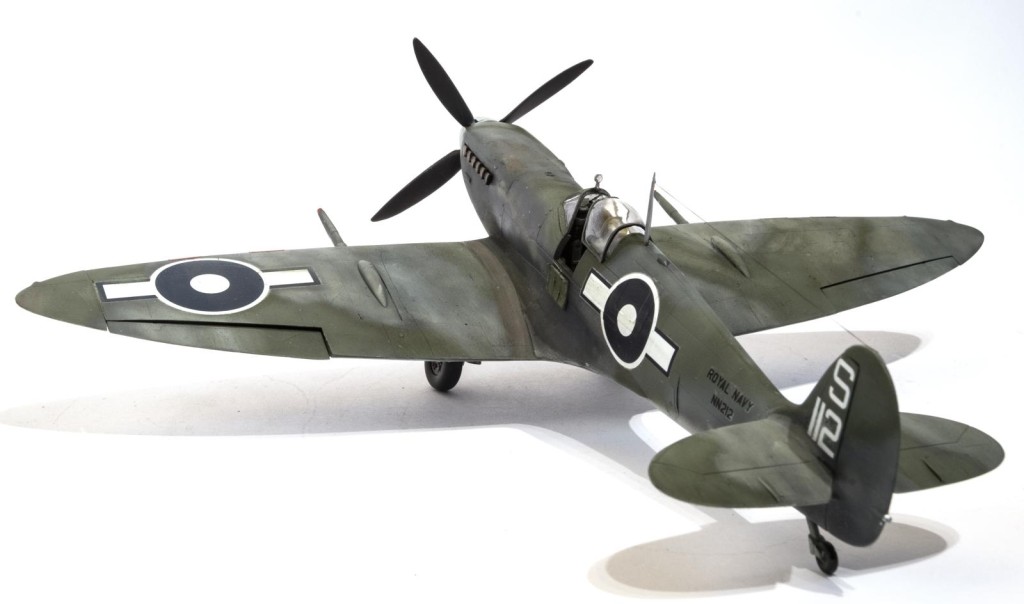
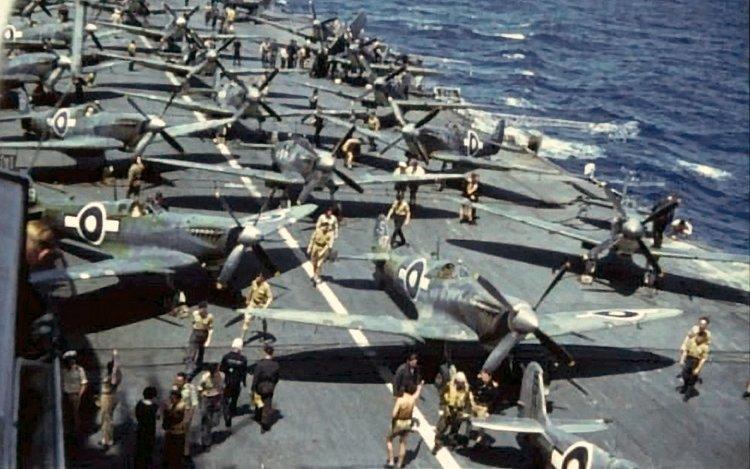
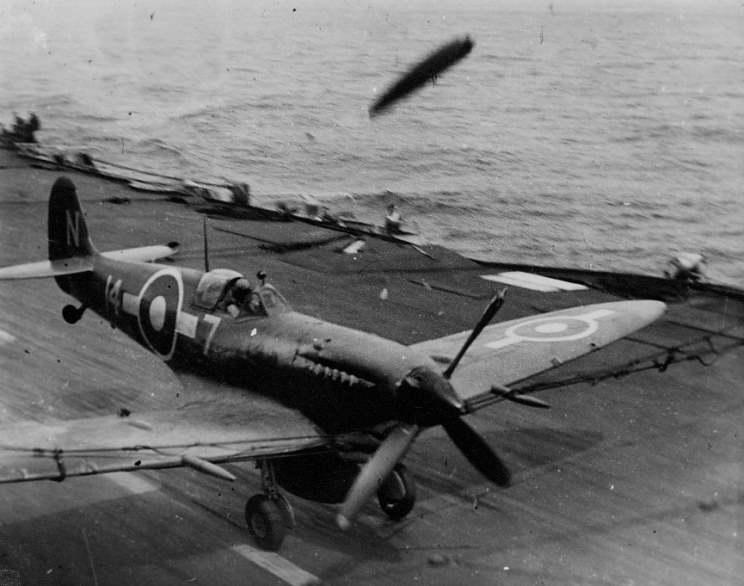


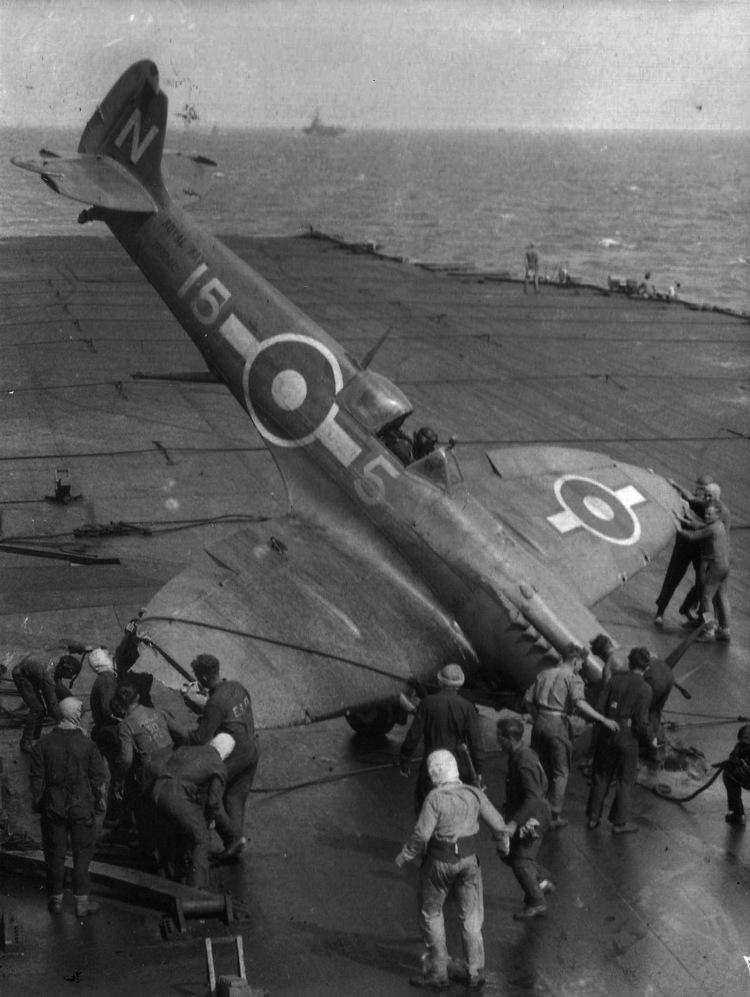
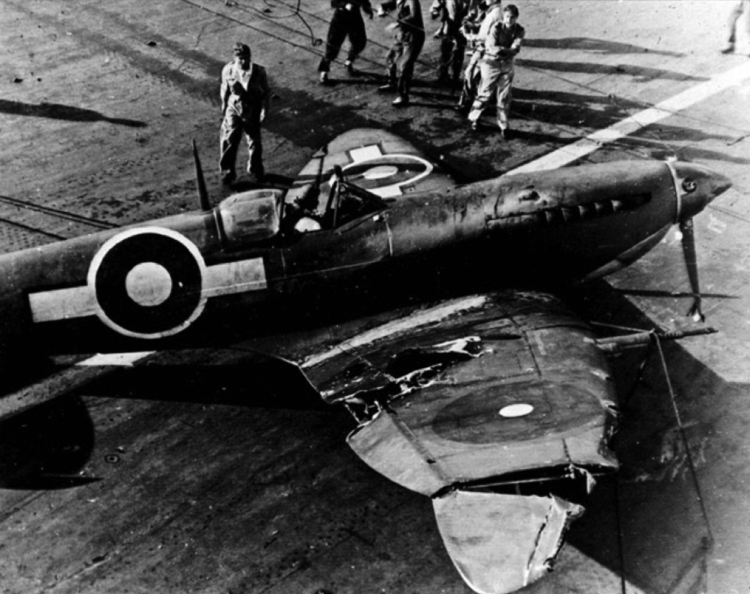

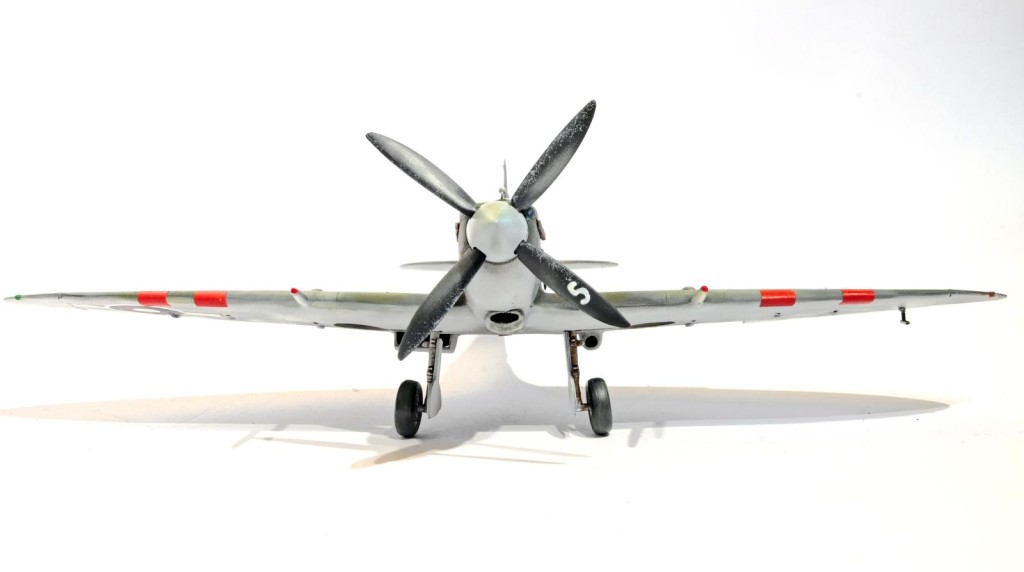
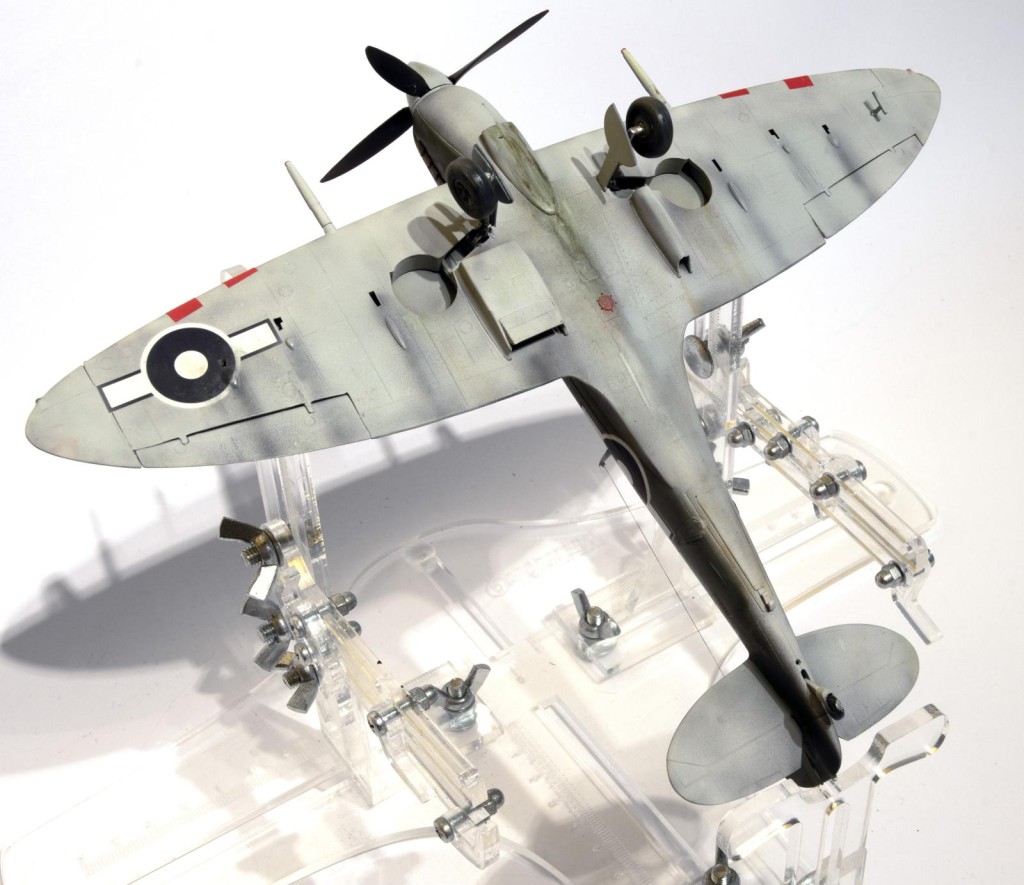
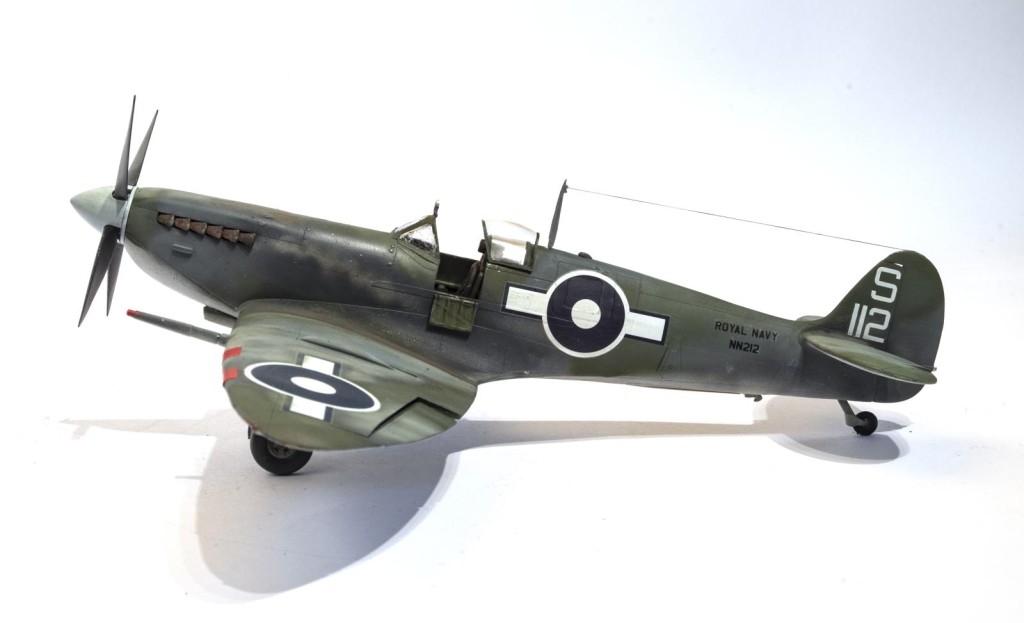
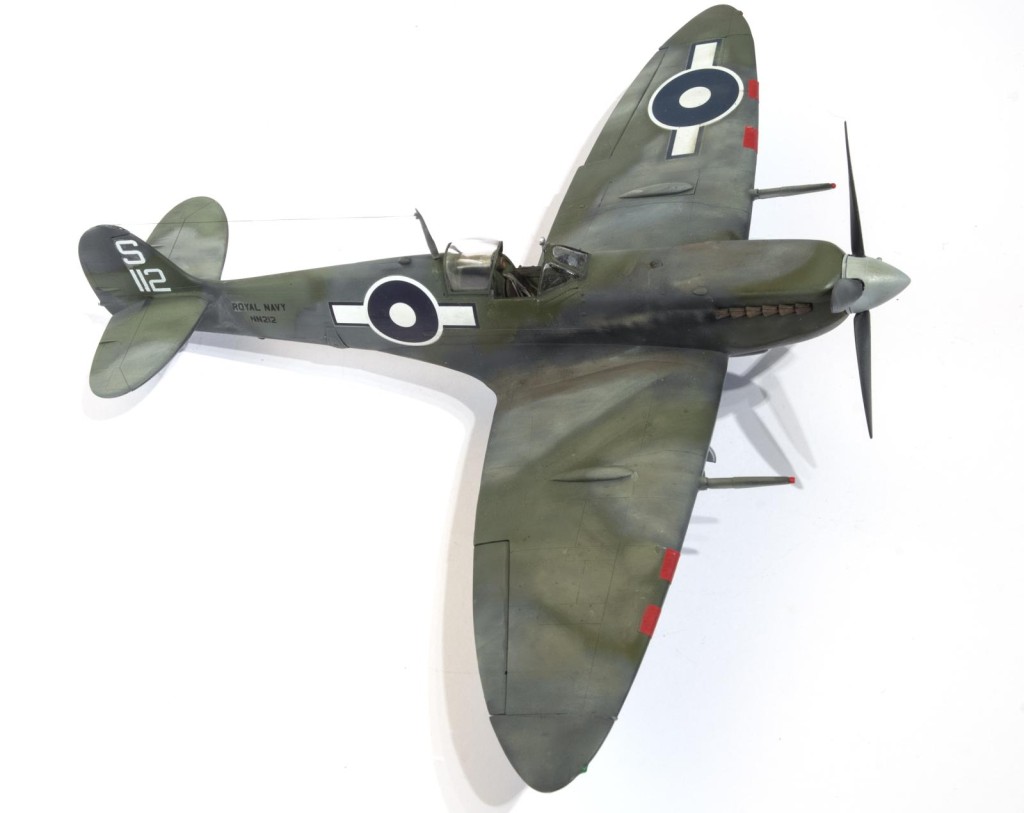
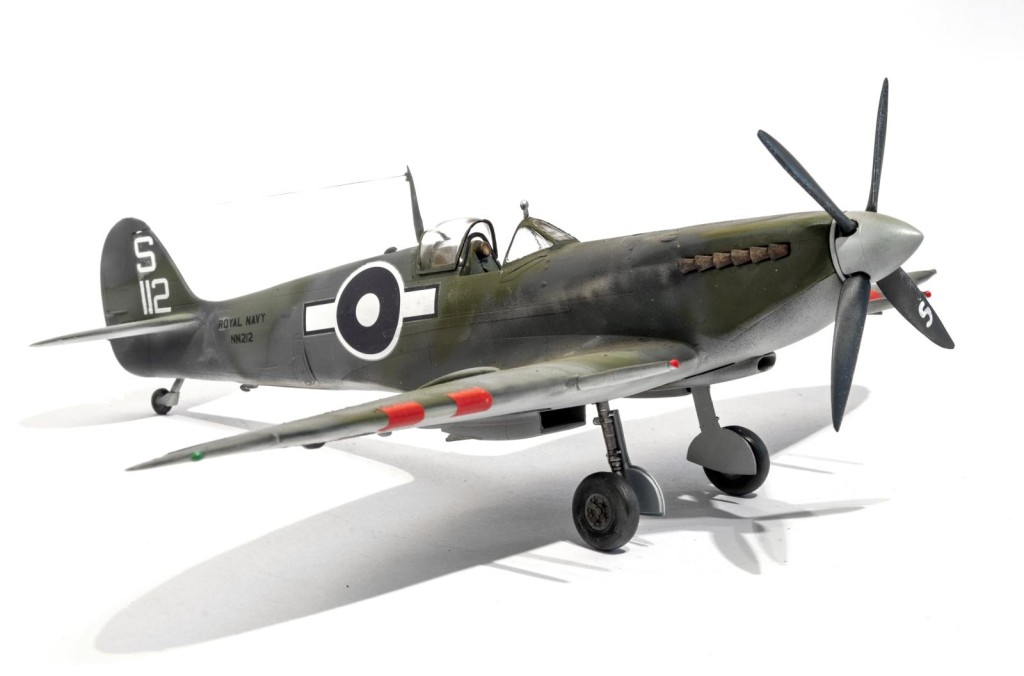
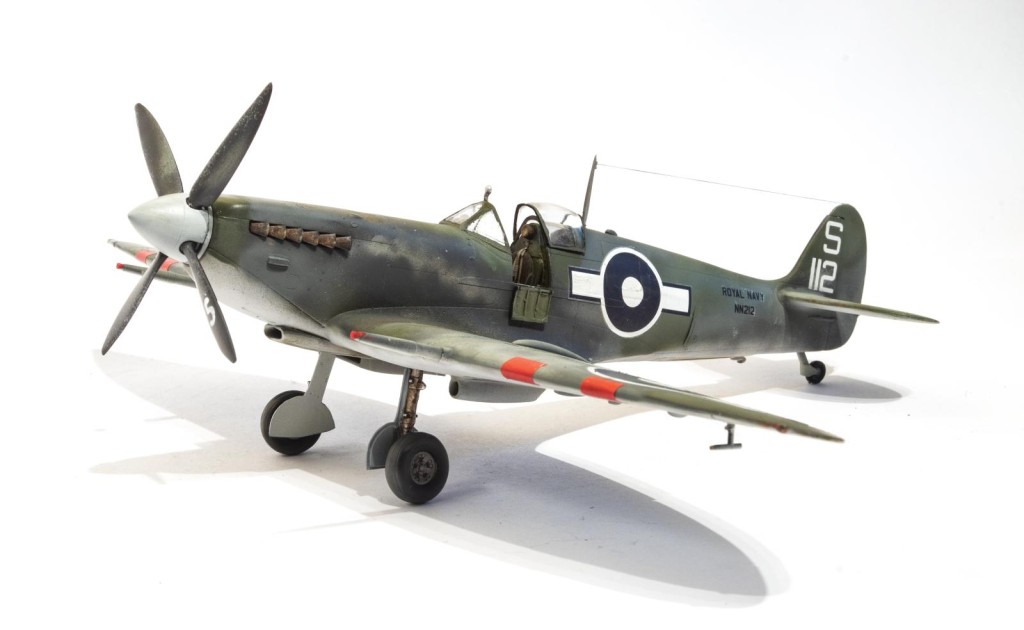
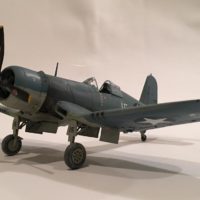
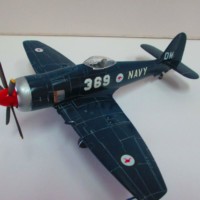
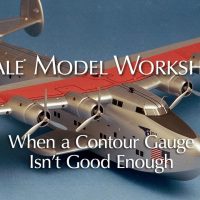
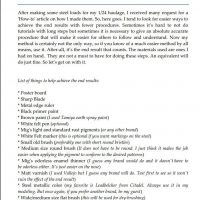
Excellent historical writing and your spit certainly looks like the weather beaten aircraft on the carrier. Excellent model by any comparison.
Thanks David, it was fun trying to represent something from a specific photo.
The write up, the build, all well done, Paul. It was a great project to be a part of.
Thanks, Gary. I’ve always said I got to the end of these builds because you lead the way!
Well done Paul, really exceptional work on the camo as well as the staining. Like you I've seen pics of British A/C where I can't discern the actual camo pattern. Fading, photograph, or a combination of both could be the reason.
Thanks, Tom - as you say so correctly I think it depends on the references you choose. It was fun messing a kit up!
Simply stunning results!
Thanks GT!
Hey Paul, I really like the whole effect you made on your model, it’s definitely unique and very realistic imo, and it doesn’t seem to be easy in achieving such worn out look without falling into extremes, which you clearly achieved.
There is however one point that I feel isn’t up to the rest of the model and that is the angle of the wings, or better saying the apparent abscence of the upward angle easily seen on all Spits family.
Perhaps it’s the photo that misleads the eye (the head on photo)?
Anyway thumbs up!
Pedro, you are correct, the dihedral is a whopping (nearly) 2 degrees out on the kit and I guess it’s something you choose to have a scrape at or accept. I believe others have said this about this kit before. I think that particular photo also adds to it (the guns and wheels seem to point distinctly apart too - and that’s due to the wide angle zoom not being perfectly corrected too).
Yeah, it’s very hard to
know when to stop and the oils and pastels took a lot of reworking with a soft filbert! In terms of some of the photos it just about works. There is always a worry when going for something a little different. I didn’t see much chipping in the original shots - so I chose to leave that apart from some significant damage to the prop.
All excellent, Paul!
This Seafire looks gorgeous!
What a writeup!
Cheers Spiros! I appreciate you taking the time to look and comment. Hope things are as good as they can be at home.
Paul, you never disappoint! That is a beauty of a Seafire. I need a good 1/72 Seafire in my stash, and I love the Pacific theater, partly because most aircraft seemed so well-weathered, and I think the markings and schemes are some of my favorite. Loved everything about the post - model, history, references, etc.
Thanks so much for the kind words, Greg. Having built (oddly) quite a lot of Japanese subjects in recent years I’m now enjoying looking at the British Pacific Fleet. I’d love to see a Seafire receive some of your magic!
Great model and story!
Thanks, Lis!
Amazing model, Paul @yellow10
The paintwork is really stunning.
The subject background is very nice to read, thanks a lot for sharing.
A true gem.
Thanks, John. It’s a period in history that has been written about a lot recently. Some incredible stories!
Paul, @yellow10
First off, I would like to thank you for including me with your project. I do sincerely appreciate this.
Wow ! Where do I begin ? This is a first class posting in multiple areas. The article itself is very well written, and I learned an awful lot about what went down in these last days of WW2 just by reading it. Up until now, I have always thought the last "kill" in the Pacific was made by a F6F as it shot down a C6N "Myrt", or possibly by a P-51D that had downed a Zero. Then go towards the middle of September 1945, and we had several PB4Y-2 Privateer's that were attacked by die hard Japanese fanatics who refused to accept the "unacceptable". There's so much that happened during this era, and we don't know everything about it as we would like to believe. Your article has shed even more light on this subject.
The pictures you posted of the completed model are incredible. The pictures you found (and we talked about) of these FAA Spits are equally as amazing.
Toss in a BEAUTIFUL Seafire model that is expertly painted, (and weathered) and you have icing for the cake. Like you, I have been learning more about these daring exploits that happened in the final days, and it has caused me to become even more interested in the FAA. I just purchased a Special Hobby 1/48 scale Fairy Firefly, and I'll try to get it done as part of the Korean War group. I have the 1/48 Grand Phoenix version as well, so I will try to build both at the same time.
I definitely pressed the "like" button, and I look forward to seeing what you have in store for us next.
Thanks for sharing this beauty with us.
Thanks again, Louis - it’s always great to chat and to see what you are up to - prolific doesn’t cover it!
Really keen to see your Fireflies! It’s great that some of the ‘lesser lights’ of these theatres are now being built!
Thanks for the shout-out @YELLOW10. You dfinitely "did the job" with this. Very nice.
Cheers Tom, as I’ve said before, my go to ‘atmosphere’ for building is to listen to pods or audiobooks. Your books have been great companions - particularly through the Japanese builds and now the coming allied planes in the Pacific.
Great work on this, Paul. The BPF is one of my areas of interest as my avatar shows. Those tear drop shaped tanks on some of the Seafires were P-40 75 gal. tanks sourced from Australia and adapted to the aircraft. The British Pacific Fleet by David Hobbs is another great reference and an outstanding read. Well done!
Cheers John, great to hear from you. I have a few more to build from the BPF. I’ll certainly look that one out!
Great story which I really didn't know. Fantastic war weary kit. The pics show whay Spitfire based wasn't the best for carrier work!
Thanks Ross! There were certainly significant issues around Seafires and carrier operations, especially around D-day. Although by the time they had reached 1945, with slipper tanks and greater pilot collective experience they flew a lot of sorties and improved their reach, and numbers of successful landings. In the air they were reasonably effective at protecting the BPF against kamikazes.
Fantastic build, an interesting narrative, and amazing photos! @yellow10
Thanks so much, Robert.
Very nice Paul, I like your Seafire a lot! Nice wheathering and photos also.
Thanks, Andreas!
Apologies Paul@yellow10, I only just seem to have caught up with this post.
Nice work on the Seafire and some wonderful photos and post about the BPF